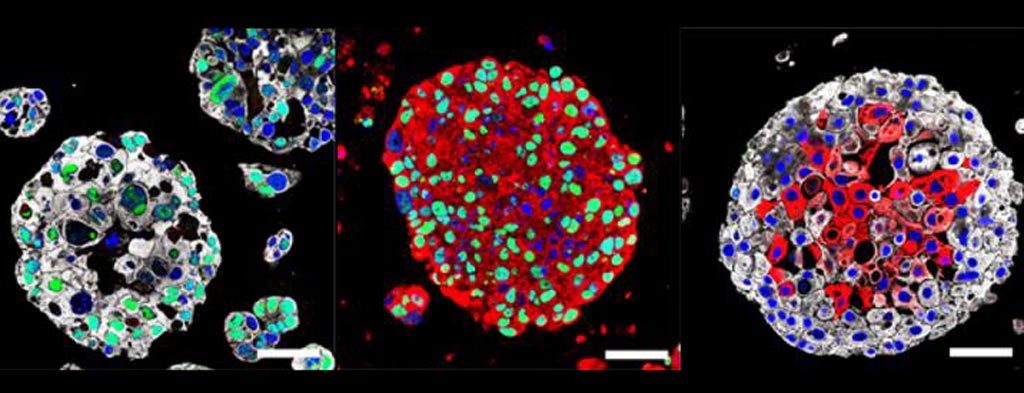Bladder Cancer Organoids May Lead to Treatment Breakthrough
By LabMedica International staff writers
Posted on 19 Apr 2018
Cancer researchers have established a "bio-bank" of patient-derived organoid lines that recapitulates the histopathological and molecular diversity of human bladder cancer.Posted on 19 Apr 2018
Bladder cancer is the fifth most prevalent cancer in the United States, yet is understudied, and few laboratory models exist that reflect the biology of the human disease. In a major effort to facilitate study of bladder cancer, investigators at the Columbia University Medical Center (New York, NY, USA) created patient-specific bladder cancer organoids, which grew to nearly one millimeter in diameter and mimicked many of the characteristics of actual tumors.

Image: Organoids created from the bladder cancers of patients mimic the characteristics of each patient\'s tumor and may be used in the future to identify the best treatment for each patient (Photo courtesy of Columbia University Medical Center).
The investigators reported in the April 5, 2018, online edition of the journal Cell that they had generated and analyzed 22 patient-derived bladder cancer organoid lines and demonstrated their histopathological and molecular concordance with their corresponding parental tumors. They showed that these organoid lines frequently retained tumor heterogeneity and displayed changes in their mutational profiles during culture and xenografting that were consistent with clonal evolution.
Analyses of drug response using bladder tumor organoids showed partial correlations with mutational profiles, as well as changes associated with treatment resistance, and specific responses could be validated using xenografts in vivo. These results suggested that patient-derived bladder tumor organoids represented a faithful model system for studying tumor evolution and treatment response in the context of precision cancer medicine.
"The great advantage of organoids is that they are essentially avatars of a patient's tumor," said senior author Dr. Michael M. Shen, professor of medicine, genetics and development, urology, and systems biology at Columbia University Medical Center. "Having these personalized laboratory models, which we can make in a matter of weeks, will let us test multiple different drugs on the tumor and help us bring precision medicine to individuals with bladder cancer. This would establish whether organoids can be used to predict how an individual patient will respond to a specific therapy. At present, it is very difficult to know beforehand exactly which drugs may be most effective for a given patient."
Related Links:
Columbia University Medical Center













